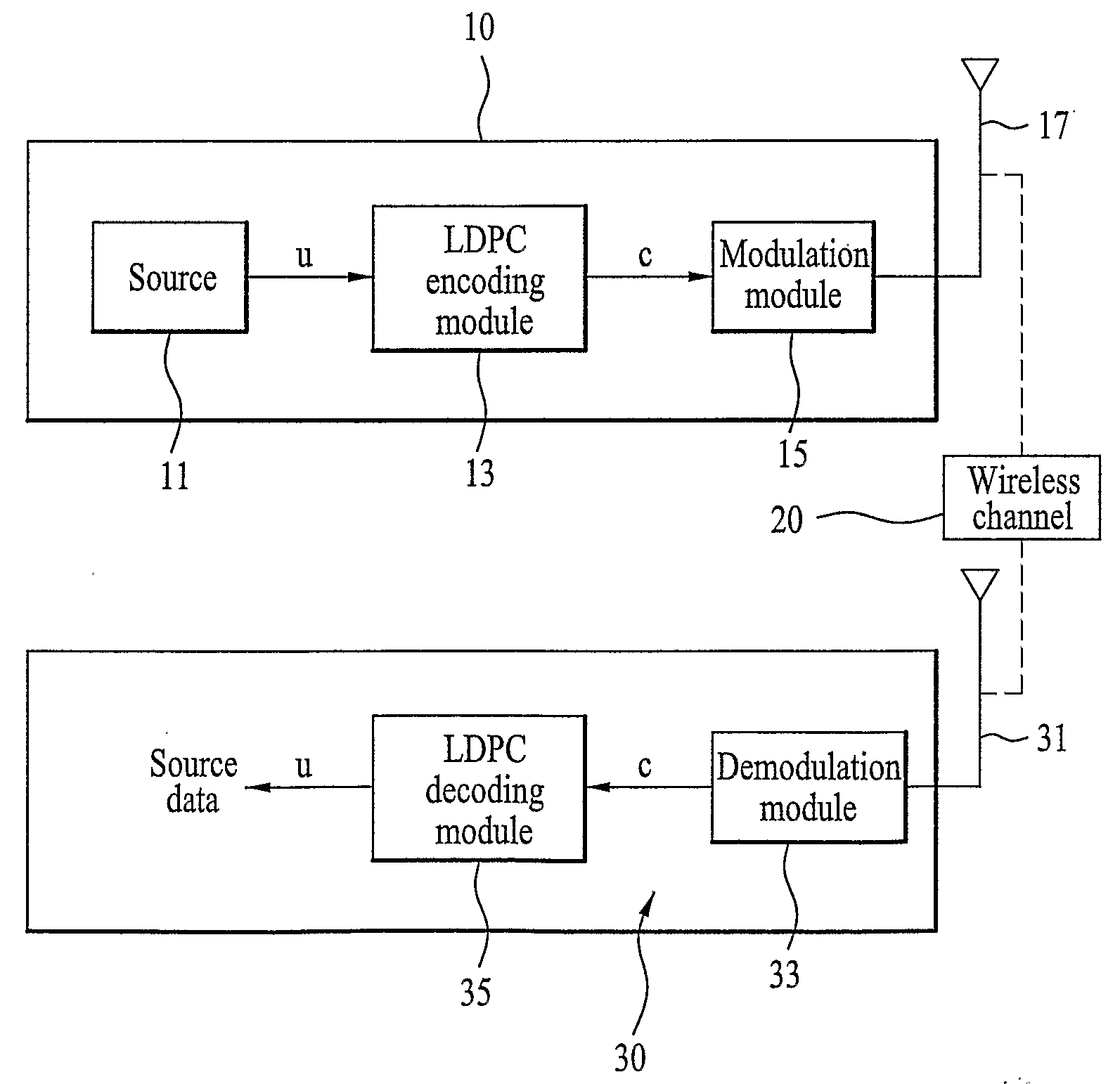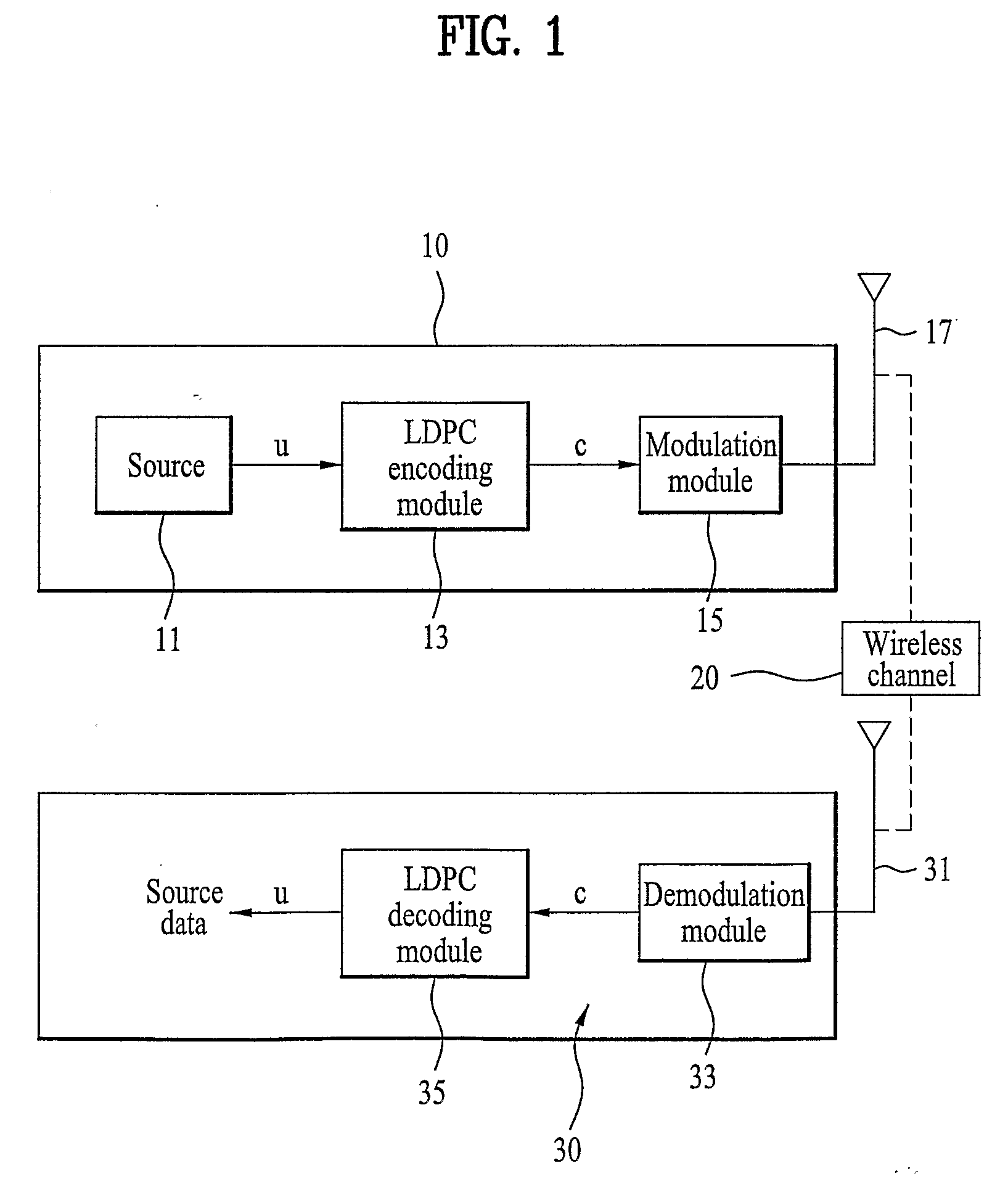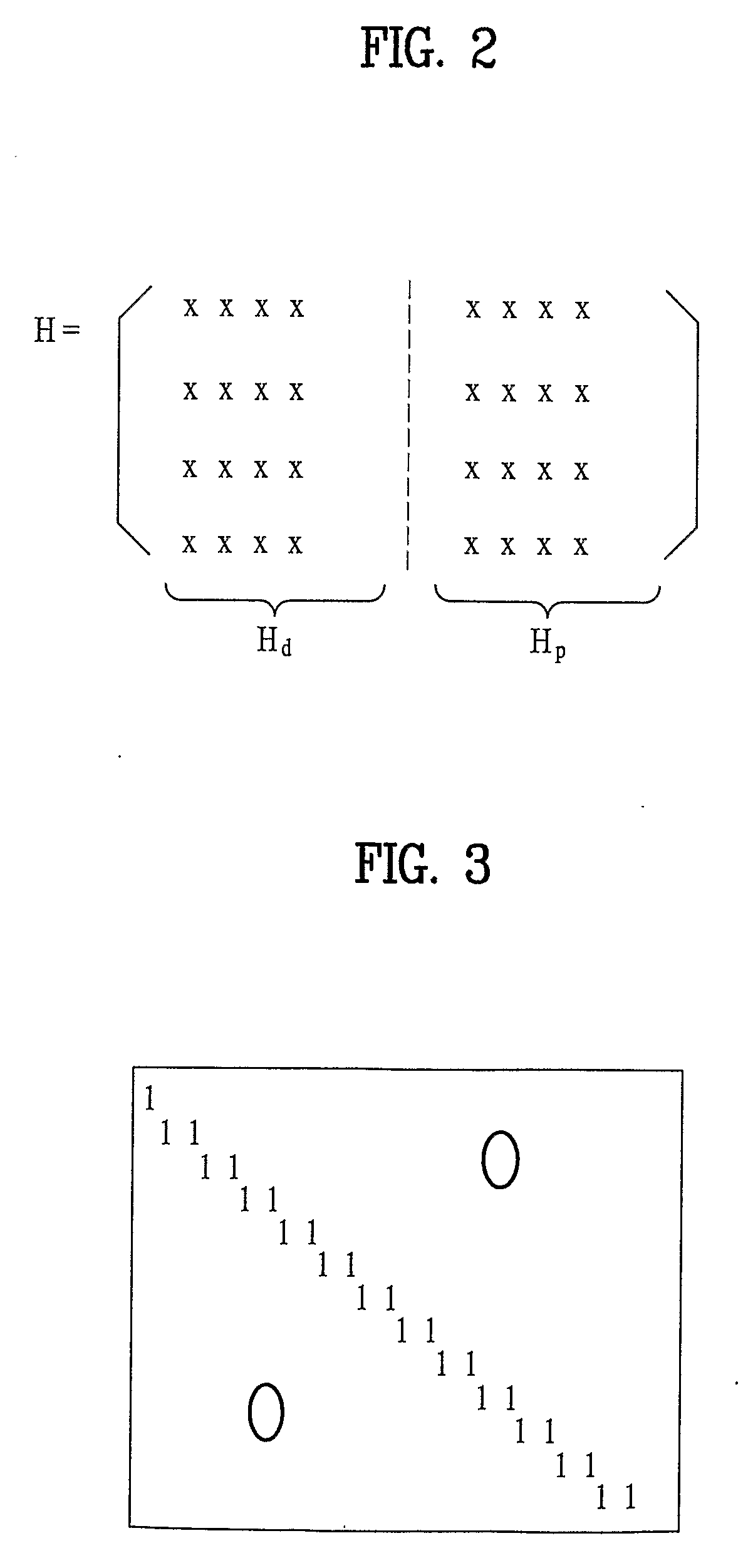Method of Encoding and Decoding Using Low Density Parity Check Code
- Summary
- Abstract
- Description
- Claims
- Application Information
AI Technical Summary
Benefits of technology
Problems solved by technology
Method used
Image
Examples
first embodiment
[0046]In a first embodiment, in case of dividing the Hd into m sub-matrices of (n−k) / m×k dimensions, a jth row of one specific sub-matrix of the m sub-matrices the Hd having consecutive ‘1’ amounting to the number of Wj (j=1, 2, . . . , (n−k) / m) on condition that each column weight of the specific sub-matrix is ‘1’. The Wj can be identical to the entire rows of the specific sub-matrix. And, the Wj can irregularly increase or decrease for the entire rows of the specific sub-matrix.
[0047]FIG. 4 and FIG. 5 are diagrams to explain the first embodiment in detail and show examples of the specific sub-matrix included in the Hd.
[0048]The specific sub-matrix shown in FIG. 4 is a matrix having 7×28 dimensions. Yet, a substantial matrix used for LDPC encoding is much larger than the matrix of the 7×28 dimensions. In FIG. 4, each row of the specific sub-matrix has four consecutive ‘1’ and the rest values of the corresponding row are zero (i.e., a weight of each row is 4.) And, a weight of each ...
second embodiment
[0049]In the Hd having a predetermined regularity in row and column weights, the Hd includes r(1−r) matrices H(i)d [where r=k / n and i=1, 2, . . . , r / (1−r)] having (n−k)×(n−k) dimensions, a random H(i)d includes m×m sub-matrices each of which has (n−k) / m×(n−k) / m dimensions, and a row or column weight of the random sub-matrix configuring the Hd is 1.
[0050]The Hd can includes at least one H(i)d [where i=1, 2, . . . , r / (1−r)] according to a code rate (r=k / n). The code rate r is a ratio of a source data length k to a length n of the encoded data and r=1 / 2, 2 / 3, 3 / 4, 4 / 5 and the like is used in general. The H(i)d is a matrix having (n−k)×(n−k) dimensions and has a relation of Hd=[H(1)d|H(2)d| . . . |H(r / (1−r))d].
[0051]Each H(i)d is characterized in that a row or column weight of a random sub-matrix configuring the Hd is 1 in case of being divided by m×m sub-matrices each of which has (n−k) / m×(n−k) / m dimensions. The ‘m’ is a positive integer and corresponds to a resolution factor of the ...
PUM
 Login to View More
Login to View More Abstract
Description
Claims
Application Information
 Login to View More
Login to View More - R&D
- Intellectual Property
- Life Sciences
- Materials
- Tech Scout
- Unparalleled Data Quality
- Higher Quality Content
- 60% Fewer Hallucinations
Browse by: Latest US Patents, China's latest patents, Technical Efficacy Thesaurus, Application Domain, Technology Topic, Popular Technical Reports.
© 2025 PatSnap. All rights reserved.Legal|Privacy policy|Modern Slavery Act Transparency Statement|Sitemap|About US| Contact US: help@patsnap.com



